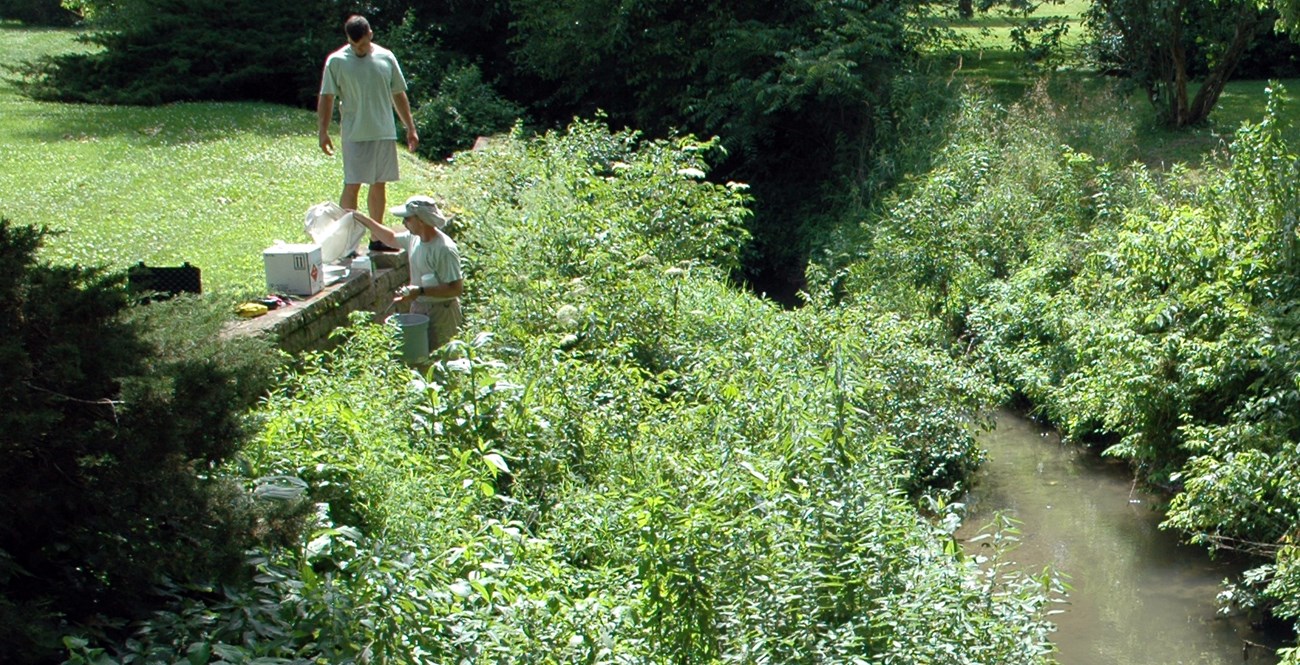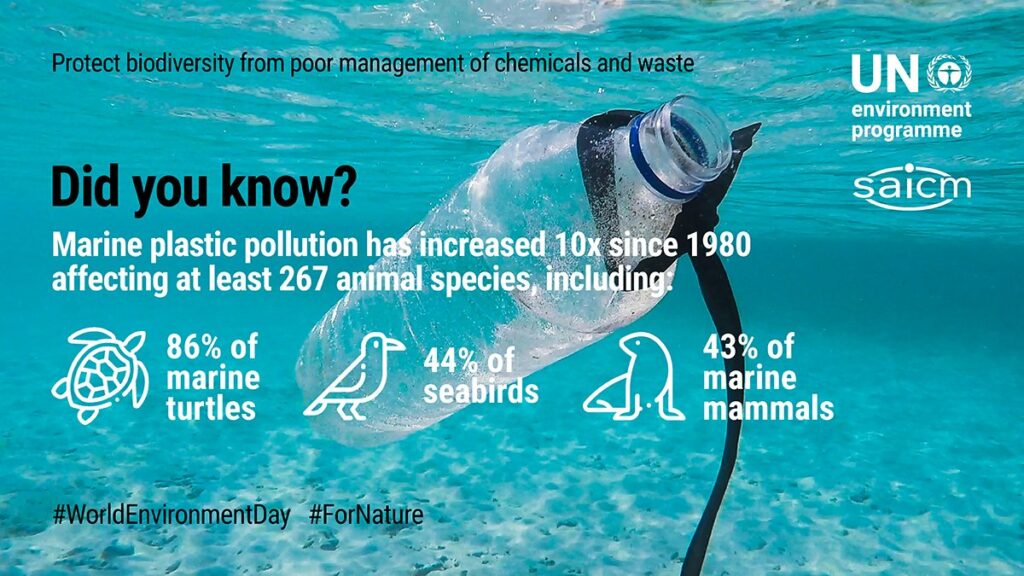

NPS
How We Monitor Aquatic Communities
We use a special net called a Surber Stream Bottom Sampler to collect invertebrates in Hoover Creek. To sample fish, we use a pulsed direct current backpack electrofishing unit and dip nets. Before releasing the fish back in the stream, we identify them to species, measure and weigh them, and examine them for disease. We also collect information on stream habitat and stream shape, depth, and flow.
To collect traditional water quality measurements, such as temperature, dissolved oxygen, pH, specific conductance, and turbidity, a calibrated water quality datalogger is placed upstream of our aquatic invertebrate sampling area. This allows us to compare water quality results with the composition of the aquatic animal community.
Sustainable Development Goals (SDGs)
- Goal 6: Clean Water and Sanitation
- Goal 14: Life Below Water
- Goal 15: Life on Land
Monitoring Aquatic Communities and SDGs
- The monitoring of aquatic communities in Hoover Creek aligns with Goal 6 of the SDGs, which focuses on ensuring clean water and sanitation for all. By collecting water quality measurements and examining the health of fish species, we contribute to the conservation and preservation of aquatic ecosystems.
- Furthermore, our efforts in identifying and measuring fish species, as well as examining them for disease, support Goal 14 of the SDGs, which aims to conserve and sustainably use the oceans, seas, and marine resources.
- Lastly, the collection of information on stream habitat and shape, depth, and flow contributes to Goal 15 of the SDGs, which focuses on protecting, restoring, and promoting sustainable use of terrestrial ecosystems. By understanding the characteristics of the stream, we can better manage and conserve the land surrounding it.
SDGs, Targets, and Indicators
-
SDG 6: Clean Water and Sanitation
- Target 6.3: By 2030, improve water quality by reducing pollution, eliminating dumping, and minimizing release of hazardous chemicals and materials.
- Indicator: Water quality measurements such as temperature, dissolved oxygen, pH, specific conductance, and turbidity.
-
SDG 14: Life Below Water
- Target 14.1: By 2025, prevent and significantly reduce marine pollution of all kinds, particularly from land-based activities, including marine debris and nutrient pollution.
- Indicator: Water quality measurements such as temperature, dissolved oxygen, pH, specific conductance, and turbidity.
The article discusses the monitoring of aquatic communities and the collection of data related to water quality in Hoover Creek. This is connected to SDG 6: Clean Water and Sanitation, which aims to ensure availability and sustainable management of water and sanitation for all. Specifically, Target 6.3 focuses on improving water quality by reducing pollution and minimizing the release of hazardous chemicals and materials. The article mentions the collection of traditional water quality measurements such as temperature, dissolved oxygen, pH, specific conductance, and turbidity, which can be used as indicators to measure progress towards this target.
In addition, the article also relates to SDG 14: Life Below Water, which aims to conserve and sustainably use the oceans, seas, and marine resources. Target 14.1 specifically focuses on preventing and reducing marine pollution, including from land-based activities. The water quality measurements mentioned in the article can also serve as indicators to measure progress towards this target.
| SDGs | Targets | Indicators |
|---|---|---|
| SDG 6: Clean Water and Sanitation | Target 6.3: By 2030, improve water quality by reducing pollution, eliminating dumping, and minimizing release of hazardous chemicals and materials. | Water quality measurements such as temperature, dissolved oxygen, pH, specific conductance, and turbidity. |
| SDG 14: Life Below Water | Target 14.1: By 2025, prevent and significantly reduce marine pollution of all kinds, particularly from land-based activities, including marine debris and nutrient pollution. | Water quality measurements such as temperature, dissolved oxygen, pH, specific conductance, and turbidity. |
Behold! This splendid article springs forth from the wellspring of knowledge, shaped by a wondrous proprietary AI technology that delved into a vast ocean of data, illuminating the path towards the Sustainable Development Goals. Remember that all rights are reserved by SDG Investors LLC, empowering us to champion progress together.
Source: nps.gov

Join us, as fellow seekers of change, on a transformative journey at https://sdgtalks.ai/welcome, where you can become a member and actively contribute to shaping a brighter future.






